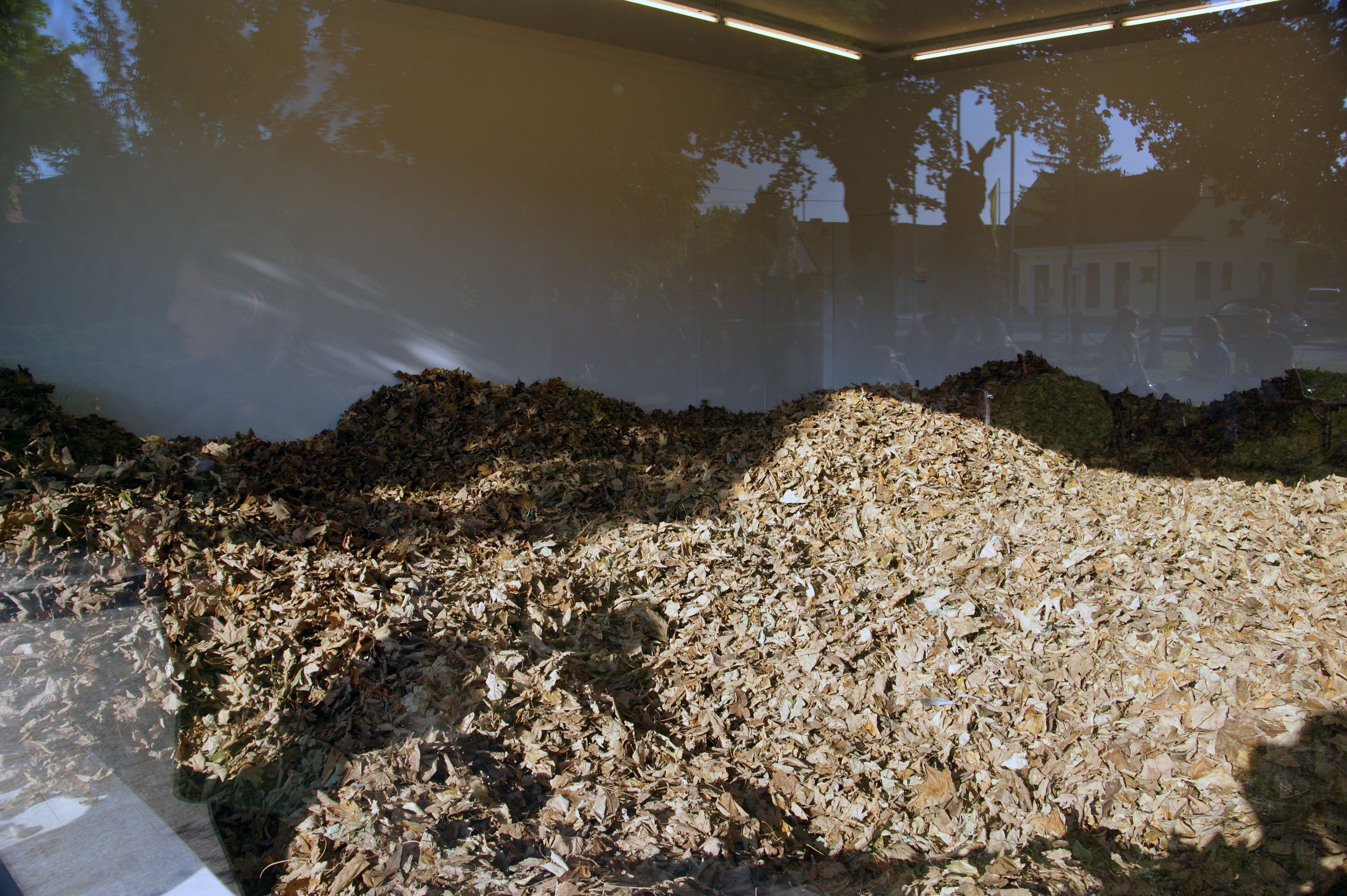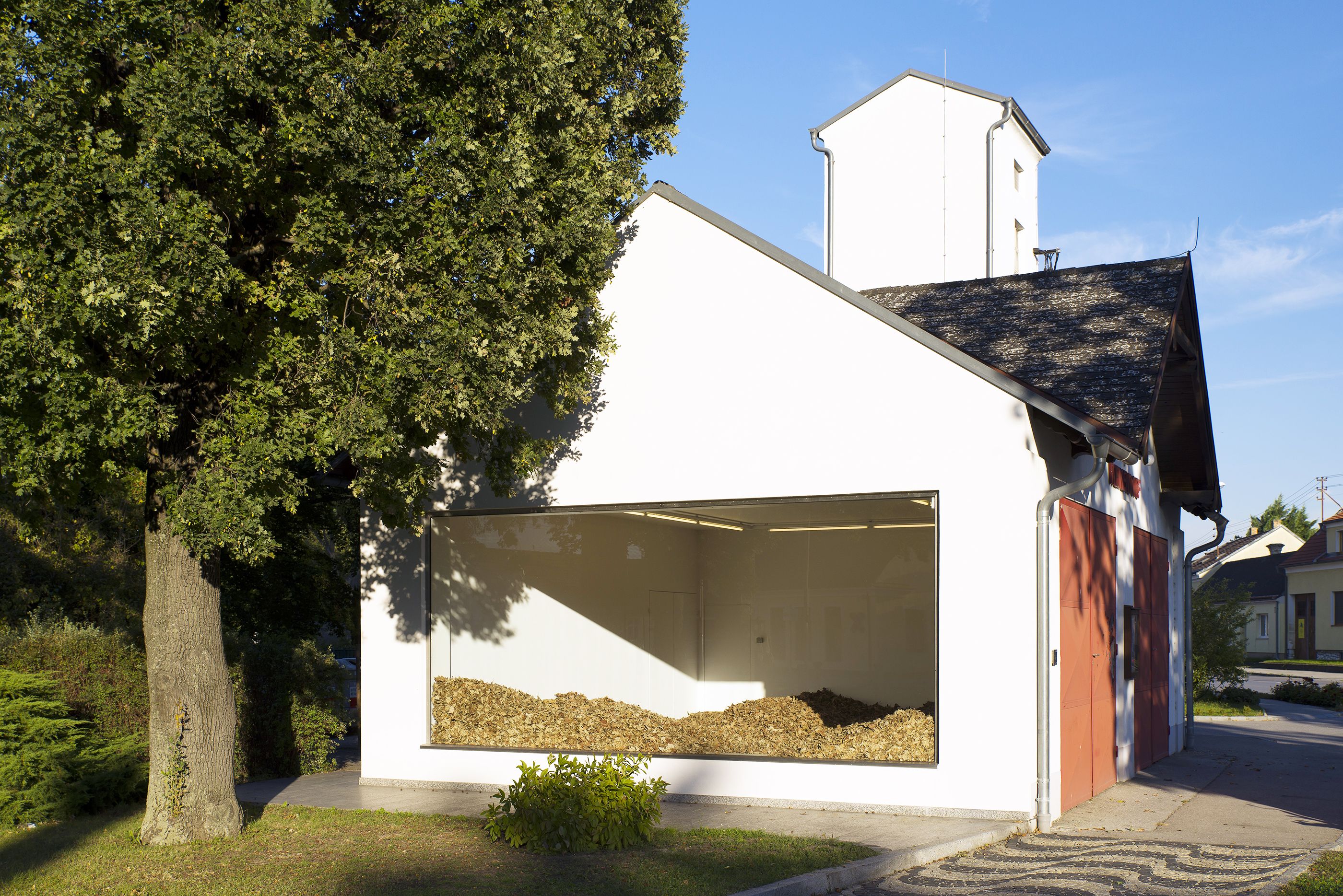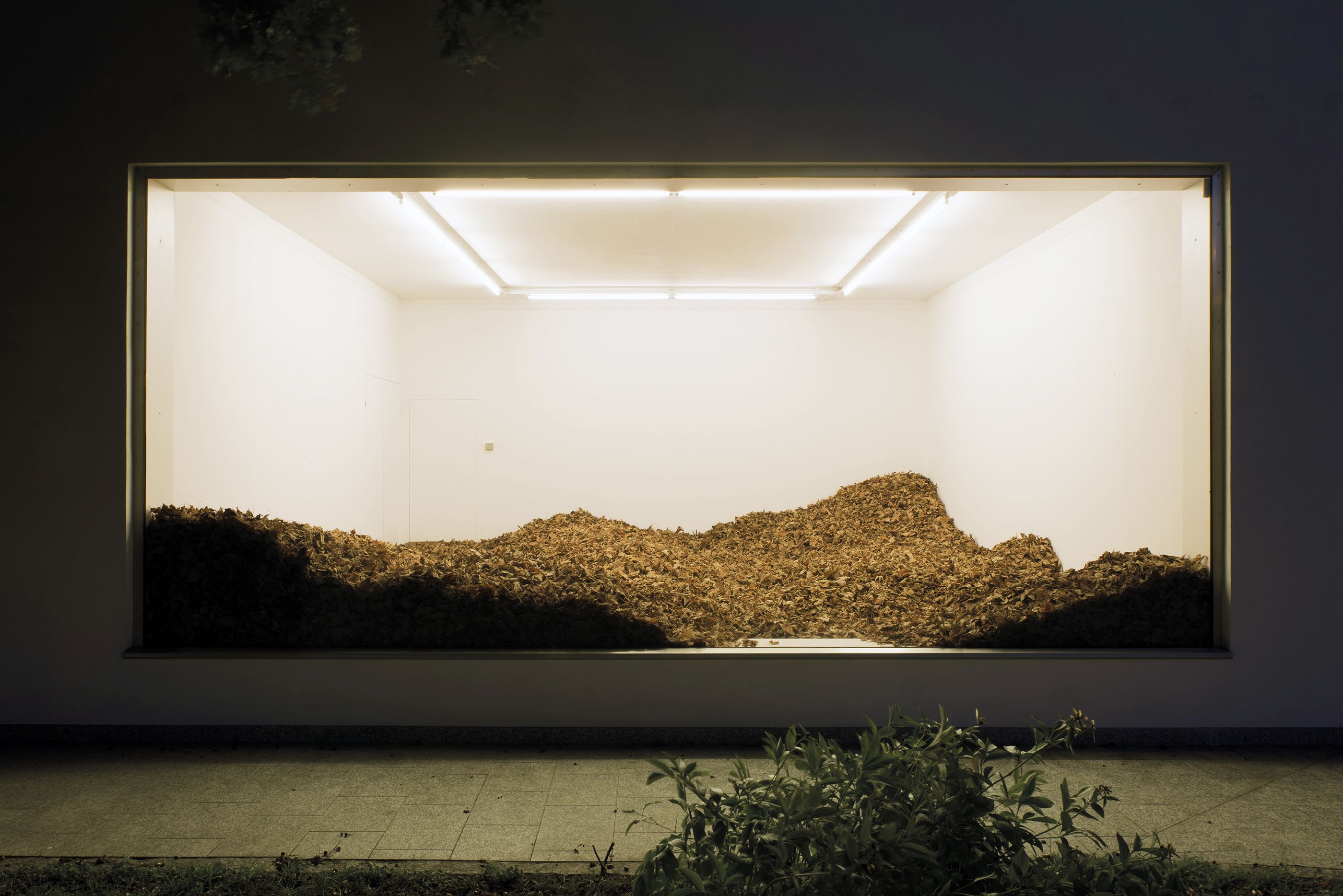Hans Schabus
:
Gemeindeumbau
Back
Information
After remodeling an old fire station and turning it into an exhibition space for contemporary art, Michael Kienzer invited artists to create temporary installations that would last half a year and would also be visible from the outside through a large window. He thus transformed the entire building into a sculpture in public space.
For the artist Hans Schabus, an exhibition begins long before it opens to the public. In his installations and films, the Carinthian artist investigates real and fictitious connections between different types of spaces – for example, between studios and exhibition spaces, and interiors and exteriors – as well as actual, constructive connections – for example, between two wooden elements. The starting point for his exhibition in the Kunstraum Weikendorf is a fundamental experience that almost every human being is familiar with: that of looking out the window at a tree on which we can observe the change of seasons in an infinitely slow progression. This spring, Hans Schabus exhibited autumn foliage in the Kunstraum Weikendorf, filling the otherwise empty room that can be easily seen from the outside though the large window, with dry leaves. By reversing our point of view from looking out to looking in, the window becomes a screen on which an imaginary film of memories is projected: rustling leaves, the fall sun, the wind, and the smell of wet foliage.
Schabus did not collect the leaves in Weikendorf; as hinted in the works’ title, he gathered them in Vienna somewhere between his studio and a public housing complex (Gemeindebau). He thus draws a parallel between the installation and twentieth-century social welfare utopias, letting the convincing metaphor of the tree – which is a perfect, natural construction, or sculpture – be reflected in the Kunstraum Weikendorf. The leaves, which were dried carefully two years before, were stored and used already in another exhibition. This shift in context links the work with those conceptual art practices introduced through such works as Walter de Maria’s Earth Room from 1968. What makes Hans Schabus’ work so interesting is how he employs very simple images for complex societal and art historical contexts while connecting them to the present day. In this age of global digital interconnectivity, this constant switching back and forth between three-dimensional and two-dimensional perception and representation is something very contemporary. (Anette Freudenberger)



